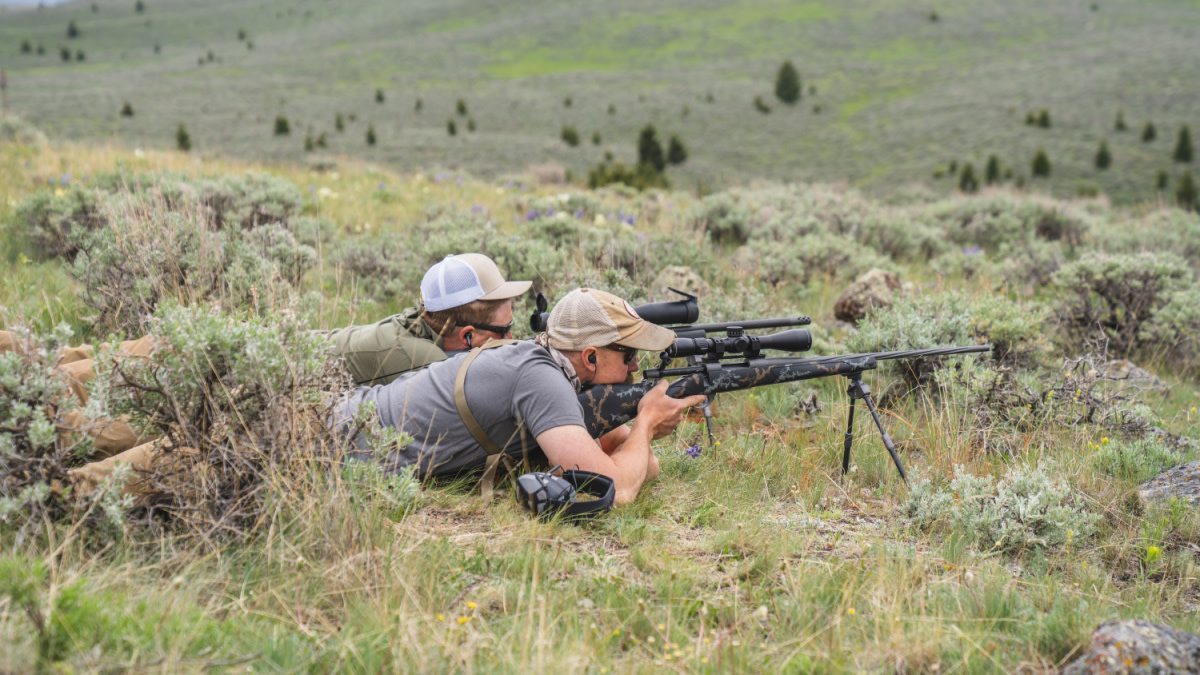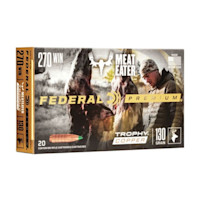
The term “varmint” usually describes animals like woodchucks, groundhogs, prairie dogs, and coyotes. These critters are rarely harvested for meat (though they can be), so hunters are happy to shoot multiple animals from long range as an effective (and fun) form of pest control.
To do that, varmint hunters have traditionally opted for a small, super-high-velocity bullet that will dispatch animals quickly and humanely. The .22-250 Remington and the .220 Swift fit that description perfectly. Both were developed in the early 20th century for long-range varmint hunting, and they’ve both performed well enough to stand the test of time.
But if you have to choose, which one should you pick?
Ballistics
The .22-250 and the .220 Swift both fire bullets between 35 and 60 grains as fast as 4,000 feet-per-second (fps), much faster than most hunting cartridges. Even though these bullets are lightweight, their velocity allows them to maintain a flat trajectory at long distance and helps them shrug off the cross-breezes so common in the grasslands.
Downrange energy isn’t a big concern for varmint hunters. If you hit a groundhog with a bullet traveling 2,500 fps, he won’t care whether it’s 55 grains or 168 grains. In these scenarios, a fast, flat-shooting bullet is more important than “knockdown power.”
Both cartridges shoot small bullets really fast, but the.220 Swift will usually throw bullets slightly faster than the .22-250, which can give it an advantage in the trajectory battle.
This .22-250 load from Federal, for example, fires a 40-grain Hornady V-max bullet 4,200 fps at the muzzle while these .220 loads fire a 40-grain bullet 4,250 fps. Since the bullets have virtually identical ballistic coefficients (which describes how well the bullet flies through the air), the .22-250 drops 6.1 inches at 100 yards while the .220 Swift drops only 5.5 inches. A half-inch isn’t much, but when the target is small, those fractions of an inch matter.
Wind drift also lines up in the .220’s column. At 500 yards, the .22-250 has drifted 34.1 inches with a 10-mph cross breeze while the .220 has only drifted 29.2 inches.
The .220 Swift’s advantage doesn’t hold in every conceivable matchup, but generally speaking, the .220 Swift will beat the .22-250 in a footrace, usually by 100 to 200 fps.
Of course, that extra speed comes at a cost to your barrel. Users who have experience with both cartridges report that the .220 Swift wears out barrels faster than the .22-250, according to Frank C. Barnes in “Cartridges of the World.” Barrel life isn’t a big concern for most hunters, but varmint hunters fire far more rounds than your average whitetail junkie. Would-be varminters must consider whether the .220’s extra juice is enough to justify a barrel replacement down the road.
But this isn’t the “barrel life” category. This is the ballistics category, and in that arena, the .220 Swift wins the race by a nose.
Winner: .220 Swift
Shootability
Both cartridges are eminently shootable. The .220 Swift will likely feel snappier thanks to its added velocity, but its top-end recoil energy is still in the 5 to 6 foot-pound range. For context, a .223 Remington produces about 4 ft.-lbs. of recoil while a .30-06 Springfield produces about 17.
Neither cartridge is going to hurt your shoulder, but I can’t say the same about your wallet. While popular with varmint hunters, the .22-250 and the .220 aren’t what you’d call ubiquitous (a five-dollar word meaning “basically everywhere”). They can be tough to find at your local sporting goods store, and you’ll pay at least $1.25 per round.
But the .22-250 has a clear advantage over its counterpart. It’s far more common than the .220 Swift, which means it’s easier to find online. Federal offers 11 different .22-250 products, and Midway USA has 36 options available. The .220 Swift, by contrast, can only be had in one variety from Federal and five varieties from Midway.
That economy of scale means that the .22-250 will usually be cheaper. High-quality hunting ammunition is similarly priced, but you can find inexpensive hunting and plinking options for the .22-250 that aren’t available for the .220 Swift. The least expensive .22-250 is right around $1.25 per round while the least expensive .220 is over $2 per round.
Winner: .22-250 Remington
Versatility
By “versatility,” I mean the range of animals that can be ethically taken and the range of firearms you can use to do it.
Both cartridges were developed specifically for varmint hunting, but both cartridges can be used on deer-sized animals as long as the hunter chooses a quality bullet 55 grains or heavier. This 60-grain Nosler Partition .22-250 from Federal would be a good choice, as would this 55-grain Fusion .22-250.
The .220 Swift can also be loaded with deer hunting bullets, but you might have more trouble finding them. Federal’s single .220 option is designed for varmints, and of Midway’s five options, none are heavier than 55 grains. So, while both cartridges can theoretically punch up to medium-sized game, the .22-250 is better from a practical standpoint.
As you’d expect based on ammo availability, more gun companies chamber a wider variety of rifles in .22-250 than in .220 Swift. Weatherby, for example, chambers five of their Vanguard models in .22-250, including the excellent Weatherguard Bronze. They don’t chamber any rifles in .220 Swift.
The contrast is even greater at large sporting goods stores. Sportsman’s Guide offers 48 rifles chambered in .22-250 while only a single rifle is chambered in .220. Cabela’s offers four rifles in .22-250 and zero in .220 while Brownells has three rifles in .22-250 and zero in .220.
Both cartridges can bring down the same range of game, but the lack of rifle options for the .220 gives the .22-250 the clear edge in this category.
Winner: .22-250 Remington
And the Winner Is…
Several Caliber Battles have compared cartridges with a similar dynamic to this one. One cartridge produces a higher velocity, but the other is more common, cheaper, or generates less recoil. In some of those previous comparisons, a higher velocity is enough to outweigh other negative qualities. I don’t think this is one of them.
The .220 Swift shoots a faster bullet, and Barnes calls it “the best varmint cartridge ever made.” But for the average hunter wandering around a local sporting goods store, that high praise won’t do him or her much good. The .220’s 100 to 200 fps advantage isn’t enough to outweigh the fact that it’s nearly impossible to find. And when you do find it, you’ll pay a pretty penny.
That’s why this Caliber Battle goes to the .22-250 Remington.
Overall Winner: .22-250 Remington




